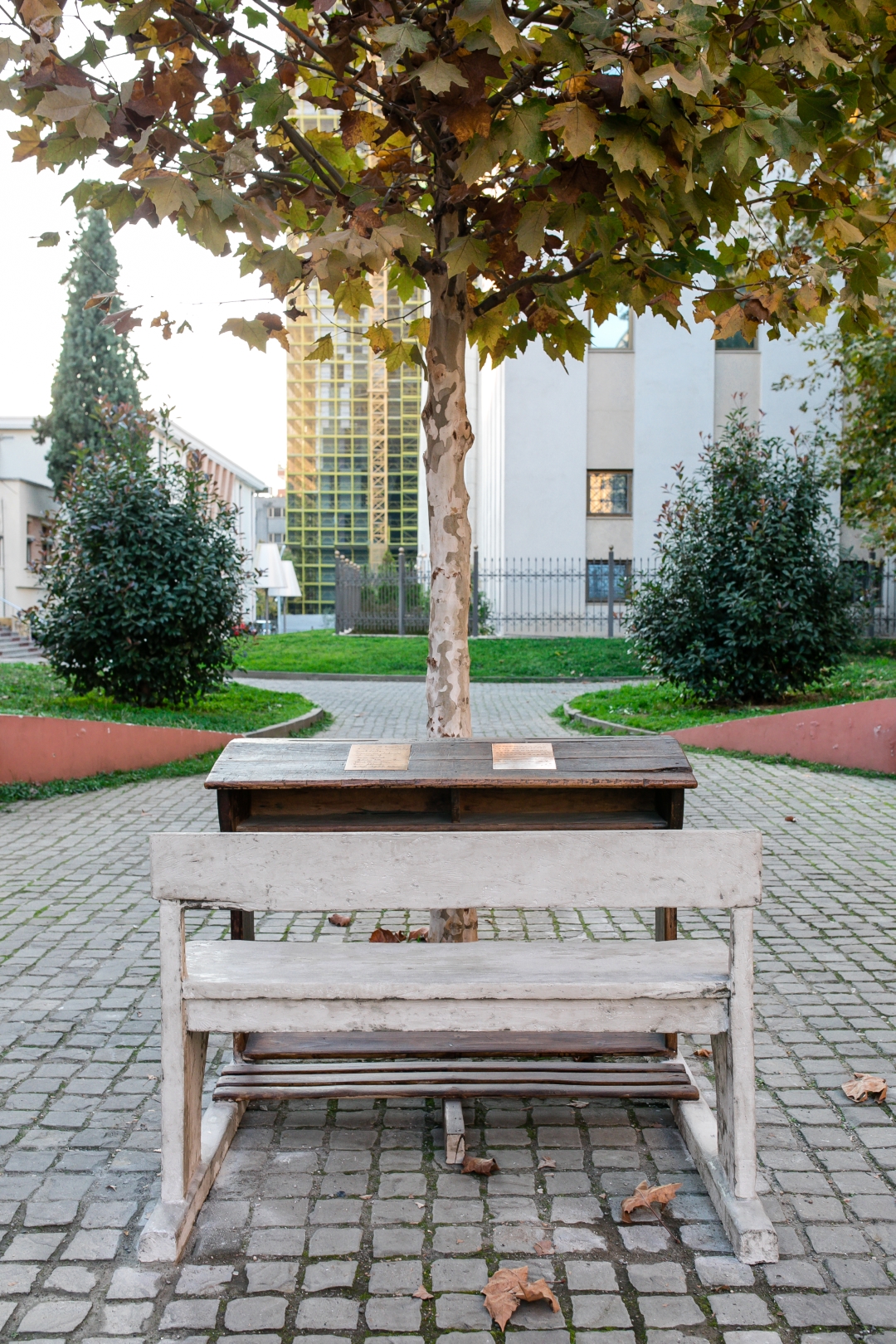Artist Adrian Paci was invited by Harabel Contemporary to create a public art work and the collaboration gave life to “The Calligraphy”, an installation placed at the square between the Ministry of Finances and the Ministry of Agriculture, in Tirana. The inauguration of the artwork “The Calligraphy” by artist Adrian Paci took place on November 19th 2020, respecting all the anti-Covid measures.
Curated by HARABEL, Paci’s “Calligraphy” will stay in Tirana for at least 5 years.
This oeuvre is the first of a series of artworks by different artists, part of a HARABEL project, which aims to create a closer interaction between the public and contemporary thought, by stimulating an open dialogue between the urban space and art.
“The Calligraphy” is an artwork that is intended to be placed in one of the public spaces of Tirana. Two ministries stand on each side of it, and in front there’s the Orthodox Cathedral, on the other side of the Boulevard stands the former National Theater. Meanwhile, it seems like the most intimate relationship that this artwork has is with a tree that stands in the middle of this small square. The artwork dates in 2020, but comes as an evidence of a reflection from a childhood experience.
A school bench, two bronze sheets resting on it. On the first sheet there are some notes written by a child, not words yet, but embryos of a future articulation. On the other sheet there are several phrases handwritten meticulously by a child: “Tirana is our capital”; “Our beloved leaders live in Tirana”; “Tirana is becoming more beautiful day by day”. This writing dates back to 1975, while the artwork comes today as a response of a later reflection. The work explores the relationship of political power and language as a manipulation tool, but it also comes as an artifact of the power of language: codes that gain meaning through content, which itself will create diverse alternatives of discourse.
The two sheets on the bench stand as an evidence of two different moments in time; one before and one after. The uncodified signs of the first sheet are accompanied by the moment “after”on the second sheet, where the beautifully written phrases carry all the weight of the propagandistic distortion of what appears as the initial potential on the first sheet. The sheet with the language as a territory of opportunity and the sheet with the language as a propaganda territory both stand on a children’s school bench. In the space between one sheet and the other, the nuances and the overlaps can be numerous, just as the nuances between this little work and the surrounding city, with the numerous signs and expressions that are articulated daily on its urban space.
*Adrian Paci (born in 1969 in Shkoder, Albania) studied painting at the Academy of Art of Tirana. In 1997 he moved to Milan where he lives and works. The works of Adrian Paci grow out of a search for meaning guided by inner needs, as an active way of thinking about the contemporary world. They draw on a deep familiarity with art history, combining the observation of social dynamics in our time with an awareness of the symbolic depth of actions, and an interest in the interpretive potential of images. Key motifs in his oeuvre include travel, passage, waiting—which is above all a state of expectation—and ties to one’s time and place of origin, which are not dimensions to which anyone can return, but rather deep touch- stones that individuals must carry with them, to give even the most ordinary actions their full range of meaning. Throughout his career he held numerous solo shows in various international institutions such as: Kunshalle Krems (2019); Museo Novecento, Florence (2017) MAC, Musée d’Art Contemporain de Montréal (2014); Padiglione d’Arte Contemporanea – PAC, Milan (2014); Jeu de Paume, Paris (2013); Kunsthaus Zurich, Zurich (2010); Bloomberg Space, London (2010); The Center for Contemporary Art – CCA, Tel Aviv (2009); Museum am Ostwall, Dortmund (2007); MoMA PS1, New York (2006) and Contemporary Arts Museum, Houston (2005). Amongst the various group shows, Adrian Paci’s work has also been featured in the 14th International Architecture Exhibition – La Biennale di Venezia (2014); in the 48th and the 51st edition of the International Art Exhibition – La Biennale di Venezia (respectively in 1999 and 2005); in the 15th Biennale of Sydney (2006); in the 15th Quadriennale di Roma, where he won first prize (2008); in the Biennale de Lyon (2009); and in the 4th Thessaloniki Biennale of Contemporary Art (2013).
Adrian Paci teaches painting and Visual Arts at Nuova Accademia di Belle Arti NABA, Milan. He has been teaching art classes at Accademia Carrara di Belle Ari Bergamo, 2002-2006, IUAV, Venice 2003-2015 and has been giving lectures and workshops in many Universities, Art Academies and Institutions in different countries.

















